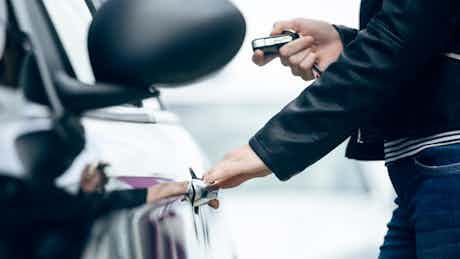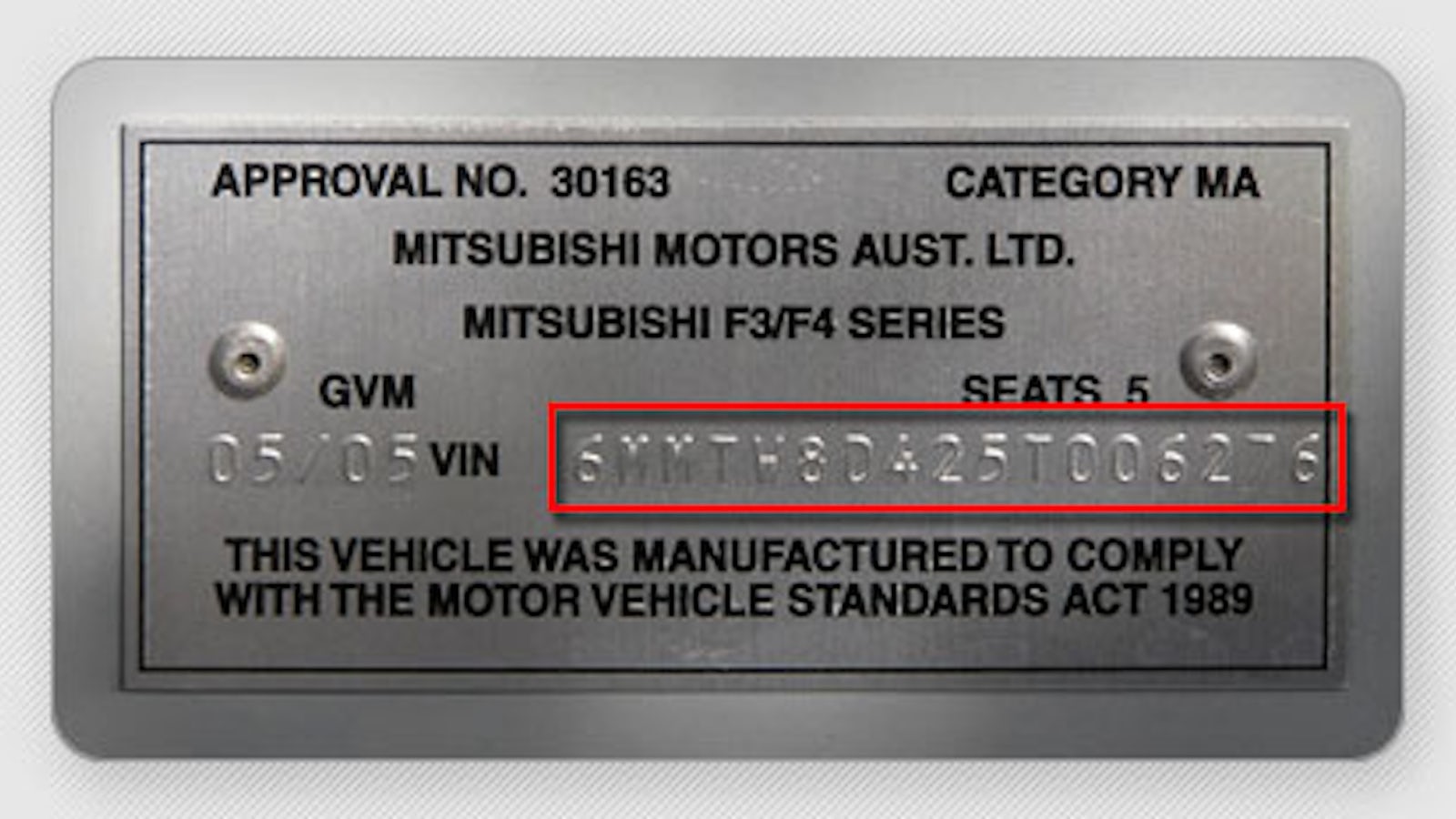What is a VIN number?
July 02, 2025 by Siobhan Doyle

You may have heard the term VIN number thrown around before. Every car has one, but what does it mean?
Have you ever wondered, “What is a VIN number?” A VIN number, or Vehicle Identification Number, is a unique code that tells the story of your car. In this guide, we’ll explain what a VIN number is, why it matters, and how to find it.
What is a VIN number?
A vehicle identification number, better known as a VIN or chassis number, is like your car’s fingerprint. It’s a unique 17-digit code that sets your car apart from others, even if they’re the same make and model. You can’t change it, and it’s super useful for things such as tracking ownership or finding your car if it ever gets stolen.
Remember, you can buy a brand new or used car right here on Carwow. And you can also sell your car, too. We’re here to help you through every step of your car-changing journey.
Why is a VIN number important?
When buying or selling a car, the VIN is one of the most important things to check. It’s a unique, unchangeable code that helps prevent car crime, such as theft or the resale of stolen vehicles. Always make sure the VIN on the car matches the one in the V5C logbook. If it doesn’t, that’s a big red flag and a sign to walk away.
The VIN is also used by manufacturers to issue recalls or handle warranty repairs, so having the correct number ensures you don’t miss any important updates about the car.
What does a VIN look like?

Even though it’s called a VIN, it’s actually a mix of letters and numbers, each with a specific meaning. Here’s a breakdown of what they all mean:
- 1st character (number): Tells you where the car was built (e.g. UK, Germany, etc.)
- 2nd & 3rd characters (letters): Show the car manufacturer (like Citroen, Ford, etc.)
- 4th to 8th characters (letters & numbers): Give details about the car – brand, engine size, fuel type, transmission, and more.
- 9th character (letter): A security code that confirms the VIN is legit and approved by the manufacturer.
- 10th character (letter): Tells you the model year of the car.
- 11th character (letter): Shows the factory or plant where the car was built.
- Last 6 characters (numbers): This is your car’s unique serial number – it’s like the car’s fingerprint.
Where to find the VIN number on a car?
When checking a used car, you’ll want to find the VIN in a few different spots and make sure they all match up. Here’s where to look:
- Start with the V5C logbook: This should list the car’s VIN.
- Look at the base of the windscreen: Most UK cars have a visible VIN here so police can do quick checks.
- Check the chassis: The VIN is usually stamped into the metal in places such as inside the engine bay, on the floor by the front seats, or in the door shuts (where the door closes).
VIN number check
If you’re buying a used car, one of the first things to do is make sure the VIN on the V5C logbook matches the VIN actually on the car. If they don’t line up, it’s probably stolen – so just walk away.
But the VIN can tell you way more than that. You can find out if the car has any unpaid finance, if it’s been recalled, or if it’s ever been written off.
Want to check? Carwow has a free tool where you can look up a car’s VIN and get some basic info. If you want the full picture, such as stolen status, write-offs, or finance, you can pay for a full history check starting at just £3.99.
VIN number FAQs
Can I change a VIN number?
There are only a few situations where a VIN will need to be changed. If you have a kit car, if your car’s been rebuilt or altered in such a way that it doesn’t match the original VIN, the DVLA will have to assess your car and will possibly issue it with a new VIN.
This can only be done by the DVLA though, altering your VIN without approval from the DVLA is highly illegal.
When should I check a car’s VIN?
If you’re looking at buying a second hand car, it’s worth checking the VIN to ensure it isn’t stolen, written off or has outstanding finance.
You can also use the VIN to check if your car has any outstanding recalls from the manufacturer.
What if the VIN on my V5C and car don’t match?
If the VIN on your car and the V5C are different, this is a huge cause for concern. It could mean your car is stolen or cloned, which is when criminals swap the VIN on a stolen car to hide its identity.
It could also mean the car is “cut and shut”, which means it was involved in a bad accident and two cars have been welded together. These cars are extremely unsafe and you should stay well away.
Is the chassis number the same as the VIN?
Yes, the chassis number and VIN are the same thing. Chassis number just refers to where the number is stamped on the car. The engine number is completely different however, as the engine can be changed.
How many digits is a VIN?
A VIN has 17 characters and has a mix of letters and numbers. It’s like your car’s ID and tells you things like the make, model, year, and where it was built.
Are all VIN numbers 17 digits?
Most modern cars have a 17-digit VIN, and that’s been the standard since 1981. But if you’re looking at a classic or vintage car made before then, it might have a shorter VIN. So if it’s less than 17 characters, it’s probably an older vehicle.
Car change? Carwow!
Looking for a new set of wheels? With Carwow you can sell your car quickly and for a fair price – as well as find great offers on your next one. Whether you’re looking to buy a car brand new, are after something used or you want to explore car leasing options, Carwow is your one stop shop for new car deals.
Click here to follow us on WhatsApp, where you can keep up-to-date with all the latest news, reviews, advice guides and videos.















